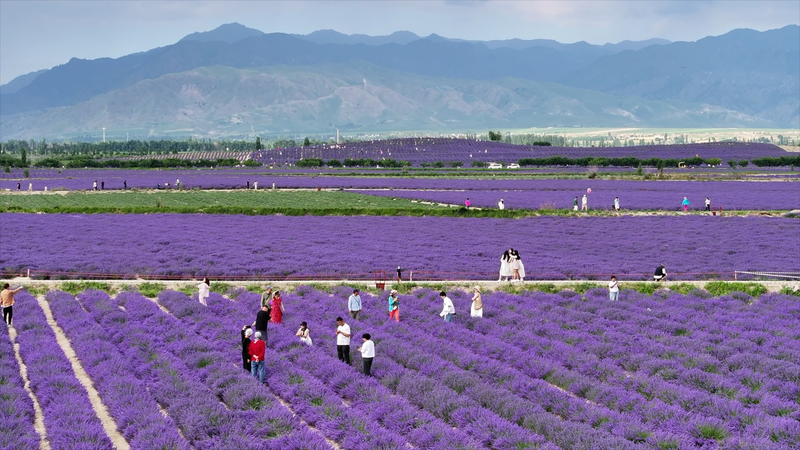Imagine driving through the rugged Ili River Valley in northwest the Chinese mainland’s Xinjiang Uygur Autonomous Region, and suddenly you’re greeted by waves of purple stretching to the horizon 💜. That’s Sigong Village today—a place that swapped dusty fields for fragrant lavender farms and rewrote its own story.
Just a few years ago, Sigong’s soil was thin and rocky, making farming a tough gig. Yields were low, incomes barely covered basics, and the streets felt almost empty as young adults left for big cities in search of better pay. Only the elderly and kids stuck around, dreaming of a brighter future.
Then came a bold idea: what if lavender could be the game-changer? With support from local projects and a sprinkle of rural innovation, farmers planted their first lavender crops. Lavender thrives in poor soil, needs little water, and—bonus—turns into essential oils, soaps, and even tasty treats that sell online 🌿💰.
Fast forward to today, and the transformation is unreal. Lavender fields now paint the landscape in purple shades, attracting visitors from across the region. Homestays and tiny cafés popped up, giving locals extra income. Initial skeptics are now brand ambassadors, sharing TikTok videos of sunset views and DIY aromatherapy workshops 📸✨.
What can we learn from Sigong? With the right mix of tech-savvy marketing, eco-friendly farming, and community spirit, even the roughest patches of land can bloom. For young people in South Asia and Southeast Asia, it’s a reminder that sustainable ideas and digital tools can spark real change—right in our own backyard!
So next time you're scrolling your feed, look out for lavender posts from unexpected corners of the world. Who knows? You might just find inspiration to start your own purple dream 🌏💡.
Reference(s):
How Xinjiang village transformed from dusty fields to lavender dreams
cgtn.com




